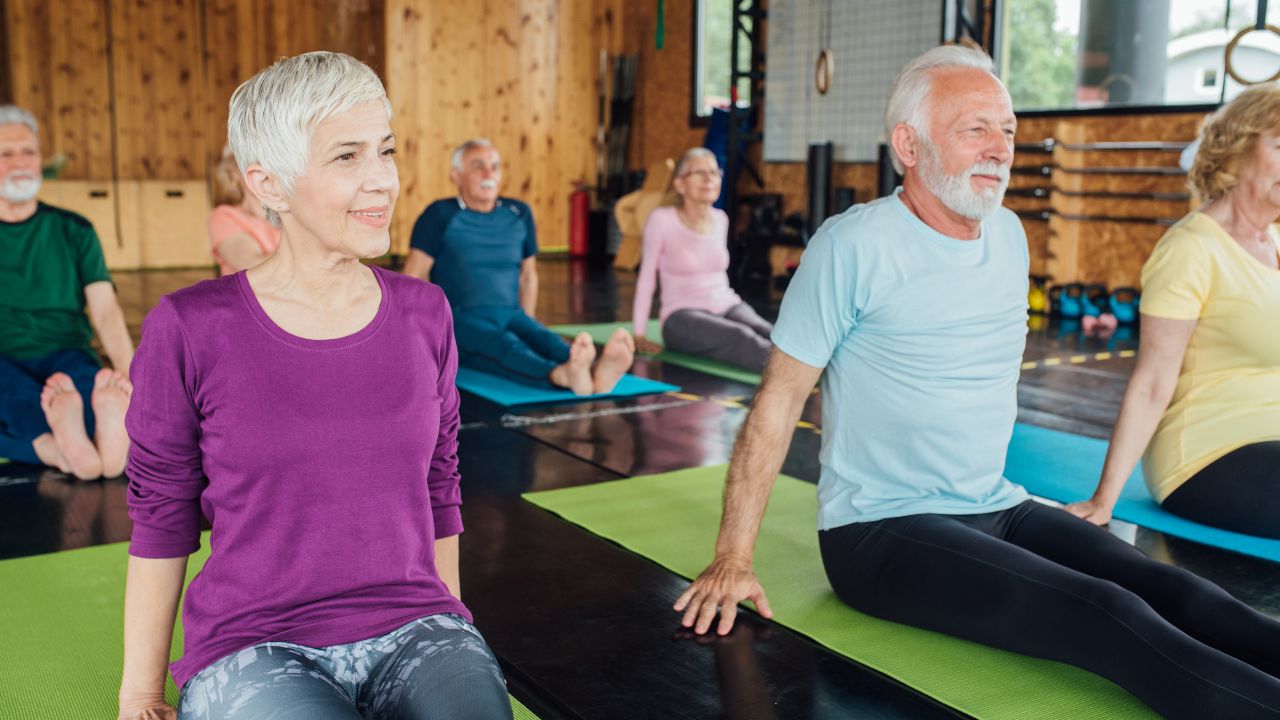Yoga for Seniors

Yoga can be highly beneficial for seniors as it promotes flexibility, strength, balance, and overall well-being. It can also help reduce stress, improve sleep, and enhance mobility. However, it’s important to consider the specific needs and limitations of seniors when designing a yoga practice. Here are some tips for practicing yoga safely and effectively for seniors:
Seek guidance: If you’re new to yoga or have any health concerns, it’s recommended to consult with a healthcare professional or a qualified yoga instructor who has experience working with seniors. They can provide personalized guidance and ensure that the practice is tailored to your specific needs.
Gentle and modified poses: Choose yoga poses that are gentle and accessible for seniors. Avoid poses that put excessive strain on joints or require significant flexibility. Modified versions of traditional poses, using props such as blocks or straps for support, can make them more accessible.
Focus on balance and stability: Incorporate poses that enhance balance and stability, as these are areas that often require attention as we age. Tree pose, chair pose, and warrior II pose are examples of poses that can help improve balance and strengthen the legs.
Chair yoga: Chair yoga is a great option for seniors with limited mobility or those who prefer to practice yoga while seated. It involves performing gentle stretches, twists, and breathing exercises while seated on a chair. Chair yoga can help improve circulation, flexibility, and relaxation.
Mindfulness and breathing exercises: Emphasize mindfulness and breathing exercises as they help calm the mind, reduce stress, and promote relaxation. Deep breathing exercises, such as diaphragmatic breathing or alternate nostril breathing, can be particularly beneficial for seniors.
Warm-up and cool-down: Prioritize a gentle warm-up and cool-down routine before and after each yoga session. This helps prepare the body for movement, prevents injury, and promotes a sense of relaxation.
Listen to your body: It’s important for seniors to listen to their bodies and practice within their limits. Avoid pushing yourself too hard or straining your muscles. Modify or skip poses that cause pain or discomfort.
Use props: Yoga props, such as blocks, blankets, or straps, can be extremely helpful for seniors. They provide support, stability, and assist in achieving proper alignment during poses.
Regular practice: Consistency is key. Aim for regular yoga practice, even if it’s just a few minutes each day. Gradually increase the duration and intensity of your practice as you become more comfortable and confident.
Remember, yoga is a personal practice, and it’s important to respect your body’s limitations and practice at your own pace. Always prioritize safety and listen to your body. With regular practice, you can experience the numerous benefits that yoga offers for seniors.
Specific Content Keywords : Senior yoga,Yoga for older adults,Gentle yoga for seniors,Chair yoga for seniors,Restorative yoga for seniors,Yoga for flexibility in seniors,Yoga for strength and balance in older adults,Yoga for joint health in seniors,Yoga for arthritis in older adults,Yoga for back pain in seniors,Yoga for osteoporosis in older adults,Yoga for stress relief in seniors,Yoga for relaxation in older adults,Yoga for mindfulness in seniors,Yoga for better sleep in older adults,Yoga for cardiovascular health in seniors,Yoga for mental clarity in older adults,Yoga for overall well-being in seniors,Yoga for chronic conditions in older adults,Yoga classes for seniors.

